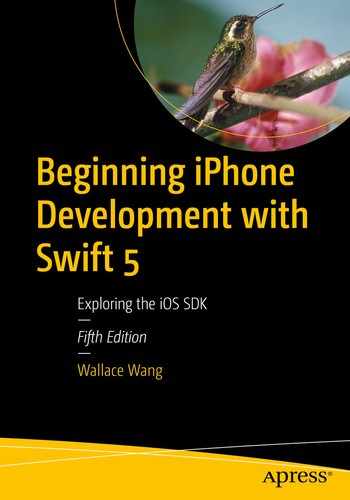Book Description
Learn how to integrate all the interface elements iOS users have come to know and love, such as buttons, switches, pickers, toolbars, and sliders. In this edition of the best selling book, you’ll also learn about touch gestures, table views, and collection views for displaying data on a user interface.
Assuming little or no working knowledge of the Swift programming language, and written in a friendly, easy-to-follow style, this book offers a comprehensive course in iPhone and iPad programming. The book starts with a gentle introduction to using Xcode and then guides you though the creation of your first simple application.
You’ll start with designing basic user interfaces and then explore more sophisticated ones that involve multiple screens such as navigation controllers, tab bars, tool bars, page views, and split views that are particularly useful on the larger screens of the iPad and certain iPhone models. And there’s much more!
Beginning iPhone Development with Swift 5 covers the basic information you need to get up and running quickly to turn your great ideas into working iOS apps. Once you’re ready, move on to Pro iPhone Development with Swift 5 to learn more of the really unique aspects of iOS programming and the Swift language.
What You Will Learn
